TREATMENT

First visit examination
During your first visit, we will perform a comprehensive examination of your teeth, periodontal tissues, bite, existing restorations and screen for any signs of oral pathologies. In addition, it is
We perform
Prevention and dental hygiene
Our main goal is to

Anti-age therapy
Hyaluronic acid wrinkle fillers are among the non-invasive methods with immediate effect. It is used to remove wrinkles, nasolabial folds, and circles under the eyes, to enlarge and shape lips, chin

Dental restoration

Root canal treatment
A root canal is a treatment used to repair and save a tooth that is badly decayed or becomes infected. During a root canal procedure, the nerve and pulp are removed and the inside of the tooth is cleaned and sealed. Without treatment, the tissue surrounding the tooth will become infected and abscesses may form.

Prosthetic dentistry
Prosthetic dentistry means the replacement of damaged teeth tissues with crowns. We are able to replace lost dental tissues using
Implantology
Teeth are a very important factor in defining the quality of life. A dazzling smile, effective mastication as well as clear enunciation to a great extent influence the social and psychological state of a person. The apparent willingness to have healthy teeth is the main reason for the rapid development of implant dentistry.

Dental surgery
We perform removal of wisdom teeth. Wisdom tooth extraction
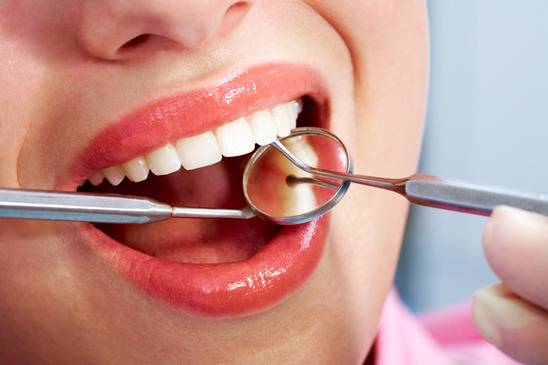
We perform
Dental hygiene is a crucial part of maintaining healthy teeth. Here at Dental Beauty
- painless removal of plaque/calculus using an ultrasound scaler (anesthesia can be given per request)
- removal of tooth stains and undesirable pigmentation (caused by smoking, coffee or tea) using an Air-flow device. This consists of sandblasting the teeth with a polishing powder mixed with water under high pressure.
- polishing with a special fluoride polishing paste
- analysis of
overall state of dental hygiene and patient education on correct brushing, flossing and other oral hygiene techniques - periodontal examination
It is recommended to undergo professional dental hygiene at least once every six months.
Plaque accumulation can lead to bleeding of the gums and inflammation, if not cleaned properly it may progress to periodontal disease and bone loss.

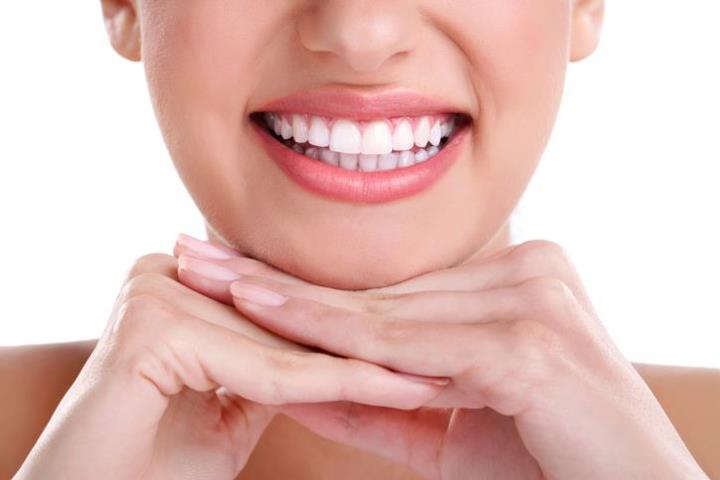
What can cause tooth discoloration?
- Certain foods/drinks – coffee, tea, wine, berries, soft drinks etc can stain teeth
- Tobacco use
- Poor oral hygiene
- Injury to the tooth, pulpal necrosis
- Genetics
- Aging – teeth may darken as you get older
At our
In-office whitening
Professional in-office teeth whitening is a painless and safe procedure that delivers optimum results in a relatively short amount of time.
Procedure
First the dentist will do a thorough examination of your teeth and gums to determine if in-office tooth whitening is a good option for you.- A record and picture of your current teeth shade will be taken
- Your teeth will then be polished with pumice to remove any plaque
- Your mouth will then prepared by covering your gums with a protective gel.
- Next, the whitening gel is applied to the front surface of your teeth.
- Teeth are then exposed to a special light for 15 minutes which will help the gel penetrate and whiten your teeth.
- The gel is reapplied along with the light 2-3 more times.
Total time duration of treatment may vary between patients. - Once the optimum shade (or the maximum time limit for whitening gel usage) has been reached, the teeth are rinsed and any excess gel is cleaned off.
- Additional visits can be
schedule until the desired shade has been reached.
We can offer you to watch TV or listen to your favorite music while you wait!
Professional at-home whitening kits
If you would rather whiten your teeth at home, we can offer take-home whitening treatments. This involves taking an impression of your upper and lower teeth which is sent to our lab where they will make custom whitening trays. We will provide you with the special whitening gel that will be placed into the tray for use overnight. The number of days the tray is used will depend on the level of whiteness desired and extent of staining of the teeth.
How to maintain your new beautiful white smile
- Avoid tobacco products and stain-causing food and drinks (such as coffee, tea, red wine, berries, tomato sauce, beets etc.) for at least 48 hours after whitening
- Brush or rinse mouth immediately after eating/drinking
- Drink beverages that may stain teeth through a straw
- Over time your teeth will normally return to their original color,
however you can prolong your new brighter smile by staying clear of any substances that may cause staining.
Additional information
- It is important to note that the color of fillings, crowns, and implants can’t be changed with whitening treatment
- Side effects: whitening could cause some sensitivity to hold/cold temperatures and may irritate the gums,
however these symptoms should disappear within a few days.
At Dental Beauty Clinic we work with our patients to help them maintain healthy, functional and beautiful teeth. Unfortunately, sometimes advanced tooth decay, injuries, and disease can cause severe damage to the tooth making it impossible to repair with a filling or other restoration. In such
What are Dental Implants
Dental implants are biocompatible titanium posts that are surgically positioned into the jawbone to create an anchor which mimics that of your tooth’s natural root. Once the implant has fully fused with the jaw bone, the prosthetic tooth is attached to the post.
Did you know?
The loss of a tooth can lead to several future complications. The underlying bone will start to resorb because it requires the tooth’s root to sustain its growth. This can lead to a sunken facial appearance and problems with biting and chewing. Furthermore, the healthy teeth surrounding the missing tooth may become more susceptible to caries and also begin shifting towards the empty space.
Advantages of Implants
- Improved appearance – dental implants look, feel and function just like natural teeth
- Improved self-esteem – restore your smile and self-confidence
- Durability – implants have the highest success rate of any tooth-replacement option. If properly taken care of implants can last a lifetime.
- Prevent bone loss – since implants become integrated into the bone they can stop bone loss that occurs after loss of a tooth
Procedure
The process begins with a comprehensive examination where our implant specialist will evaluate your concerns, discuss a possible treatment plan and take any necessary X-rays. On the day of your implant
Oral care tips for implants
- Practice good oral hygiene: the success and longevity of implants will depend on your oral hygiene.
Its is recommended to brush twice a day, floss daily and use interdental brushes. - Regular dental visits: frequent check ups and dental cleanings every 6 months will ensure your implant maintains a good condition.


Dental veneers are a cosmetic dental treatment that can help you achieve a full smile makeover. A veneer is a very thin, tooth-colored shell that is bonded to the front surface of your tooth. With our high-quality, custom-made dental veneers you can achieve a natural-looking, beautiful new smile. We may recommend veneers if your teeth are severely discolored, chipped, misshaped, have a gap or a slightly misaligned.
Orthodontic treatment includes correcting teeth and jaws that are positioned improperly. Crooked teeth and teeth that do not fit together correctly are harder to keep clean, are at risk of being lost early due to tooth decay and periodontal disease. Upon agreement there is possibility of consultation with our very experiences

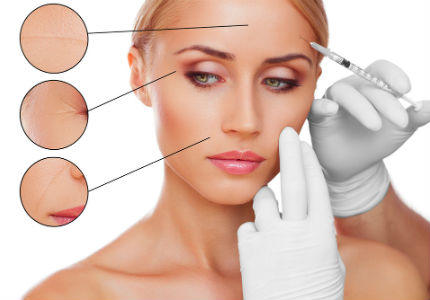
Hyaluronic acid wrinkle fillers are among the non-invasive methods with immediate effect. It is used to remove wrinkles, nasolabial folds, and circles under the eyes, to enlarge and shape lips, chin
Botulinum toxin is a substance which blocks neuromuscular transmission and thereby causes
Endodontic treatment or root canal treatment is a procedure that is performed in cases where the dental pulp is infected/inflamed in order to preserve the longevity and function of the tooth.
Pulp infection and inflammation can occur in the following cases:
- cracked/chipped tooth
- deep cavity or filling
other serious injury to the tooth
What are the signs/symptoms that may indicate the need for root canal treatment?
Symptoms that indicate the pulp has become infected may include sensitivity to hot/cold or sweets, pain, swelling, pain on biting or pressure, and a bad taste in the mouth. Sometimes no symptoms may be present and you will be unaware of the infection until a checkup.
What are the consequences of an infected or inflamed pulp?
The infection within the pulp can spread to the tissues surrounding the root of the tooth and lead to severe pain and swelling. Bacteria from the infection can also lead to damage of the adjacent bone structure that anchors the tooth within your jaw. If an infected tooth is left untreated the infection can further spread and the damage will continue which will ultimately lead to necessary tooth extraction.
Procedure
( *Note: Root canal therapy may involve one or more dental visits depending on your specific case)
First we will administer a local anesthetic to the specific area so that you feel no pain during the procedure.- Then your tooth will be isolated using a flexible sheet to ensure a sterile dry environment.
- An opening is made through the crown of the tooth into the pulp chamber. The nerve tissue and blood vessels of the tooth will then be removed.
- This is followed by shaping, cleaning and decontamination of the root canals and pulp chamber using special endodontic files and irrigating solutions.
- In some cases, a medicament will be needed to be placed in the root canals to help treat the infection before proceeding with the permanent root canal filling.
- Finally the cleaned canals are filled with a gutta percha material which ensures a hermetic seal and prevents subsequent microbial invasion.
- The tooth is then restored with a permanent filling or crown.
Post-Root Canal Treatment Recommendations
- Premolars and molars that have undergone root canal treatment most often are required to be covered with a crown. Since root canal
treatment involves the removal of a significant amount of the tooth structure, the tooth becomes weaker and can be prone to fracture in the future due to normal chewing forces. Placing a crown will also further protect the treated tooth from possible reinfection. Frontal teeth usually don’t need a crown unless there’s an extensive amount of tooth decay.
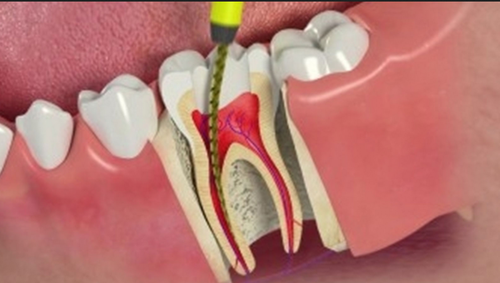
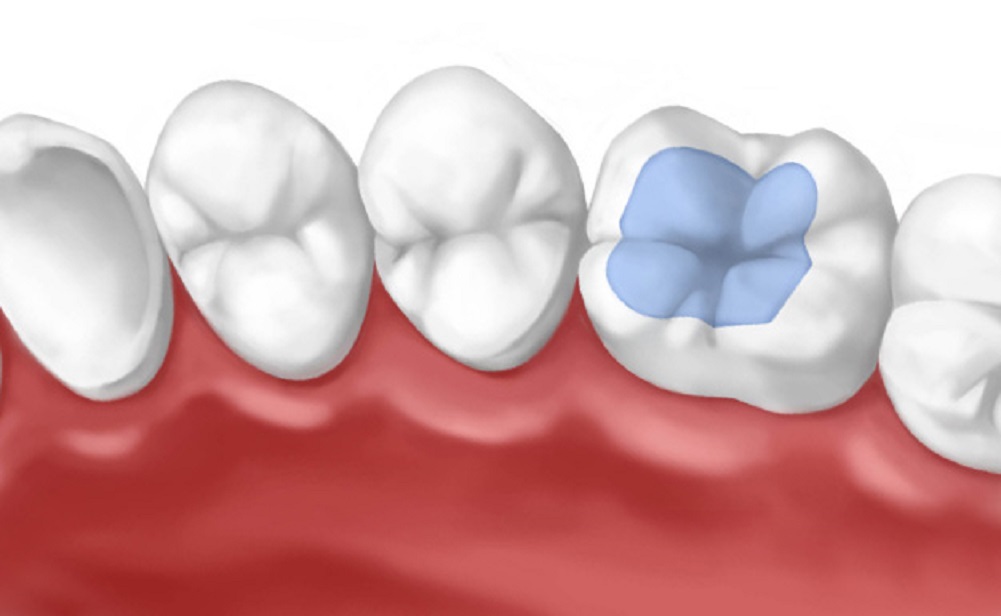
Here at Dental Beauty
What are caries and how do they form?
Dental caries, also more commonly known as tooth decay or cavities are caused by bacteria that normally reside within the mouth. These bacteria turn the sugar and carbohydrates in the foods/drinks we eat into acids. The acids can then dissolve minerals within the outer layer of the tooth known as the enamel. The weakened enamel then collapses to form a cavity and the tooth is progressively destroyed. These acids can then penetrate into the softer underlying layer known as dentin. The caries process in dentin progresses twice as fast because dentin is less resistant to this acid attack. Caries can also attack the roots of teeth if they become exposed by gum recession.
Caries that have been detected in the earliest stages can be reversed. White spots can indicate early caries that have not yet penetrated through the enamel. If caries are left untreated it can cause the tooth to decay significantly and lead to extensive destruction of the tooth and pain
Symptoms
You may not experience any symptoms with early caries however once
Diagnosis of Caries
At our clinic we use X-rays alongside other various methods to accurately diagnose caries. Early caries detection can prevent further damage to the tooth so it’s highly recommended to schedule regular check ups with your dentist.
Procedure
- If needed the dentist will administer local anesthesia to the area being treated to ensure a painless and comfortable treatment.
- The tooth decay will then be removed while trying to preserve as much healthy teeth tissue as possible.
- Once all the decay has been removed, the tooth is rinsed and dried and the filling material is applied.
- The dentist will shape and select the appropriate filling material and color to match that of your natural teeth.
- After the filling is complete your bite will be checked and any necessary adjustments will be made.
- The dentist will provide you further instructions to follow after your treatment.
How can you avoid future cavities?
- Brush your teeth twice a day with fluoride toothpaste
- Floss or use interdental brushes to clean in between your tooth
- Limit how frequently you drink and eat sweet drinks and food
- Visit your dentist regularly for check ups and professional dental hygiene.
- Ask our dentist if you’re a suitable candidate for dental sealants.
In certain
Here are some general guidelines to help promote healing, prevent complications, and make you more comfortable through the recovery
We highly recommend following these instructions to ensure your mouth heals properly after your tooth has been removed and to reduce any possible complications after the procedure.
- Bleeding: the dentist may place a gauze pack on the extraction site to limit bleeding. This will also help a blood clot to form, which is important for the normal healing process. (If the blood clot is disturbed and breaks down it may lead to a dry socket which can be painful)
- The gauze pack should be left in place for 30-45 minutes after you leave the dentist’s office
- If there is still some bleeding after
pack is removed, you can fold a piece of clean gauze, place it directly on the extraction site and apply pressure by closing your teeth over the gauze for about 30 minutes - Do not suck on the extraction site or disturb it with your tongue
- Take pain medication only as directed by the dentist
- Swelling and pain are normal after a tooth is removed. To help reduce swelling/pain:
- try applying a cold compress to your face, like an ice pack or cold moist cloth
- Call your dentist right away if you experience any of the following issues
- fever, nausea, or vomiting
- ongoing or severe pain, swelling, or bleeding
- Eating and drinking
- Day of procedure:
- drink lots of liquids and eat soft, nutritious foods
- avoid hot liquids and alcoholic beverages
- do not smoke as this can prevent proper healing of the gums
- do not use
a straw as this can disturb the blood clot - do not rinse your mouth with too much force
Day after procedure:
- begin eating solid foods the next day as soon as you can chew comfortably
- for first few days try to chew food on
side opposite the extraction site
- Other things you should know
- avoid alcoholic beverages or mouthwash that has alcohol in it for 24 hours
- limit physical activity and exercise for 24 hours after extraction, this will reduce bleeding and help the blood clot form
- if you do get a dry socket, report it to your dentist right away.

Dental Beauty Clinic, Balbínova 4, 12000, Praha 2
Office hours: 9:00 - 18:00
Mon : 9.00 - 18.00
Tue : 9.00 - 18.00
Wed : 9.00 - 18.00
Thu : 9.00 - 18.00
Fri : 9.00 - 18.00
Weekends : Upon Agreement
Dental Beauty Clinic, K Výzkumným ústavům 1, 14000, Praha 4, Ústav akademie věd
Office hours: 9:00 - 18:00
Mon : 9.00 - 18.00
Tue : 9.00 - 18.00
Wed : 9.00 - 18.00
Thu : 9.00 - 18.00
Fri : 9.00 - 18.00
Weekends : Upon Agreement

